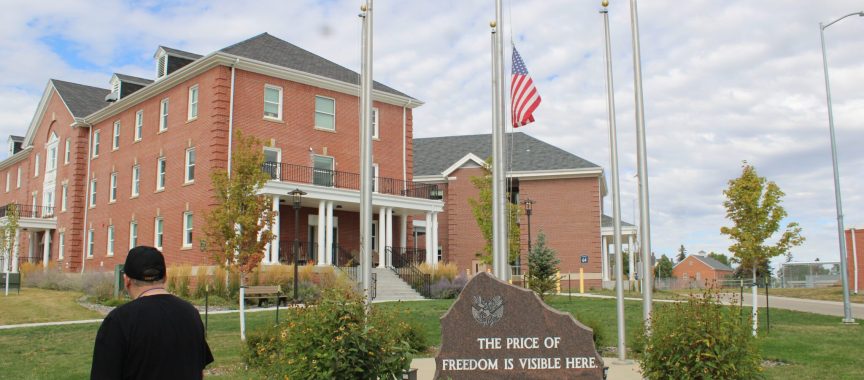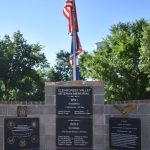News – Sheridan Media

On Saturday, September 13, around 30 people attended the special Sheridan Community Land Trust Explore History program tour of Fort Mackenzie to learn about the Fort and its transition to a VA Hospital.

Fort Mackenzie historian Thomas Hatch presented a slide show about the history of the Fort before leading the walking tour of the Fort’s grounds.
The 1890’s were near the end of the fort era, Hatch said
He added that during the time travelers were joining the westward migration along the Bozeman Trail, the army manned several forts along the way to keep them safe. By the 1890’s, many of the smaller forts were shut down and the troops were moved to other locations.
In 1894, Fort McKinney near Buffalo was shut down, as was Fort Custer near Hardin.
The 800-mile radius went up into Canada, as well as Colorado, Utah, Idaho, the Dakotas, Arizona and of Nebraska. “It was a huge area,” Hatch said.

Sheridan was growing, but they needed more money. In the 1890s, the only one who had the money was the government. As a way to get government money, the city fathers talked the Government into creating a fort.
At the time, it had only been about 25 years since Custer had been killed, and people in Sheridan remembered how terrified they were at that time.
They were afraid the Indians would leave the reservation and massacre everyone. One day a few Cheyenne Indians did leave the reservation looking for food and killed a sheepherder who saw them butchering a steer.
Now the media spread the word that the Indians were planning a uprising against the settlers. This was all the impetus needed to take the idea to congress. Local residents felt that they were in need of military protection, and the growing town needed more money, both reasons to approach the government to build a fort.
The city fathers took a trip to Washington, DC. General E.V. Sumner, deputy chief of appropriations, was from Wyoming.
The government sent people out and decided Sheridan was a great location for a fort. There was water, open range for horses, and a healthy environment.

The fort needed a name, and it was named for Ranald Mackenzie, who fought many engagements in the civil war, and was a renowned Indian fighter, being instrumental in forcing the Dull Knife and his Cheyenne tribe back on the reservation in 1876.
Some of the soldiers garrisoned there were two units of ‘Buffalo Soldiers,” black soldiers who had fought in the Indian wars.
Hatch then talked about the transition from Fort to VA Hospital in 1922. During the early 1900s, congress again began closing down the smaller forts, consolidating into larger forts in large urban areas to set up military installments.

Sheridan was not one of the large urban areas. The government left only a few soldiers to maintain the buildings and grounds. The fort buildings were well built and practically brand new, so it was decided to use the buildings and the grounds as a VA Hospital.

After the talk, Hatch led the group on a tour of the fort grounds, touring the old bowling alley, which was built to give the soldiers something to occupy their time so they would not go AWOL from the fort.

He pointed out one building that was the jail, or guard house during the time the fort was in operation. Other interesting sites on the tour was the parade ground, which is still an open field and the tramway that connects many of the buildings. On the hill across the parade ground are the officer quarters, most which are still in use today.

The flagpole is the center of the fort, and it was the first permanent structure to be built at the new fort. At one time the fort housed several cavalry horses, and the barn still has some horse’s names over the stalls. At one time, Sheridan’s trolley cars ran a regular route from Sheridan to the new VA Hospital.

The fort is on the National Registry of Historic Places and gives one a glimpse of the early days of Sheridan, when the residents felt they were in danger of immediate attack by Native American warriors.
Last modified: September 16, 2025






